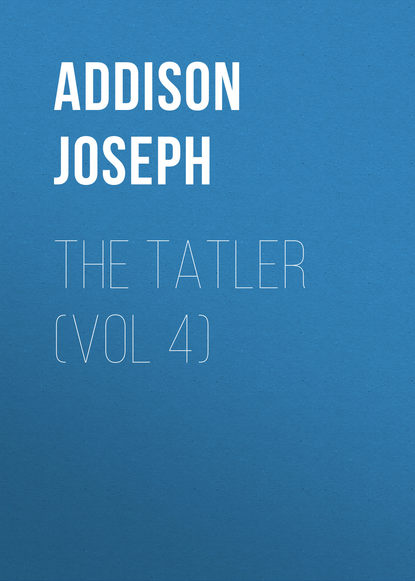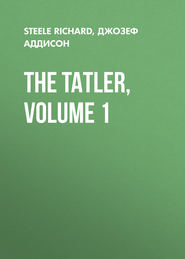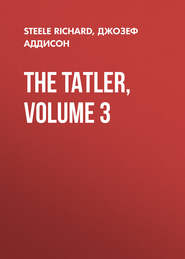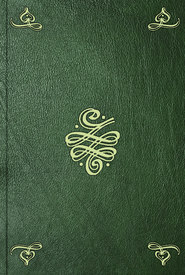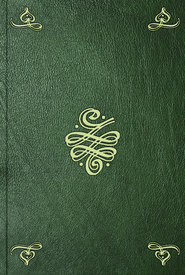По всем вопросам обращайтесь на: info@litportal.ru
(©) 2003-2024.
✖
The Tatler (Vol 4)
Настройки чтения
Размер шрифта
Высота строк
Поля
A hanger-on. As Mr. Dobson points out, Thackeray gives the title of "led-captain" to Lord Steyne's toady and trencher-man, Mr. Wagg ("Vanity Fair," chap. xxi.).
36
"Eunuchus," act ii. sc. 2, l. 23.
37
See Nos. 36 and 140.
38
Q. Curtius, "Hist.," iii. 6, &c.
39
Lady Strafford, writing in 1712, says: "Sis Betty … hopes you'll provide her a husband against she comes, for she begins to be in fears of leading apes in hell" ("Wentworth Papers," 285).
40
See reply in No. 212.
41
The fifth paper of the first volume of the Examiner is a critique on this article, with a comparison of the account of the same events given in the Gazette.
"We too are sorry," says the writer, "for the loss of the Earl of Rochford; but I am afraid Isaac Bickerstaff, who now compliments him with the title of 'heroic youth,' has forgot the Tatler of Tun, Gun, and Pistol." This seems to allude to No. 24.
In the conclusion of the paper, Steele is reproached for meddling with matters of State, and warned in a contemptuous manner, with a reference, no doubt, to his being gazetteer, &c., to take care of himself. Arguments of a different kind, it is said, were made use of about this time, to detach Steele from his party, equally in vain.
42
James Stanhope, who became Secretary of State on the accession of George I., and Earl Stanhope in 1718, had been appointed commander-in-chief of the British forces in Spain in 1708. He died in 1721.
43
William, second Earl of Rochford, brigadier-general, was thirty-six years of age when he was killed at the battle of Almenara.
44
Possibly John Hughes, author of the "Siege of Damascus," who contributed to both Tatler and Spectator. He died in 1720, aged forty-seven. In the Theatre (No. 15) Steele said that Hughes's "head, hand, or heart was always employed in something worthy imitation."
45
Dr. South (see Nos. 61 and 205).
46
See No. 151.
47
The Spectator contains accounts of the new-fashioned hoods, which were made in various tints, especially cherry-colour. In the reign of King William the ladies wore a high head-dress, as appears from the following passage in a letter of Swift to Esther Johnson, dated Nov. 22, 1711: "I dined to-day with Sir Thomas Hanmer, whose lady, the Duchess of Grafton, wears a great high head-dress, such as was in fashion fifteen years ago, and looks like a mad woman in it, yet she has great remains of beauty." In the Spectator (No. 98) Addison refers to these high head-dresses as in fashion ten years earlier, i. e. about 1701.
48
This picture of Flavia has been thought to be a representation of Mrs. Anne Oldfield (see No. 10), of whom Cibber wrote: "Had her birth placed her in a higher rank of life, she had certainly appeared in reality what in the character of Lady Betty Modish she only excellently acted, an agreeable gay woman of quality, a little too conscious of her natural attractions. I have often seen her in private societies, where women of the first rank might have borrowed some part of their behaviour, without the least diminution of their sense of dignity." From this passage it will be seen that the account of a lady "of quality," with "the greatest simplicity of manners," can hardly be a description of Mrs. Oldfield. Moreover, the name "Flavia" occurs in No. 239, by Addison, and it appears that the lady there referred to was Miss Osborne, who became Atterbury's wife.
49
Something used to frighten children. Cf. Sir T. Smith's "Appendix to his Life," p. 34: "As children be afraid of bear-bugs and bull-beggars."
50
See No. 210
51
Ibid.
52
Bacon has an essay "Of Simulation and Dissimulation"; and Sallust, in his character of Catiline ("Bell. Cat." v.), says, "Animus, subdolus, varius, cujus rei libet simulator ac dissimulator."
53
See No. 60.
54
See No. 207.
55
See the story of Sergeant Hall in No. 87.
56
It is not unlikely that the account of a State weather-glass in this paper is by Addison, who was the author of the description of an ecclesiastical thermometer in No. 220.
57
See Nos. 1, 11, and 43. The dedication was to the Second Part of "Don Quixote," which D'Urfey addressed to Charles, Earl of Dorset, in these lines:
"You have, my Lord, a patent from above,
And can monopolise both wit and love,
Inspired and blest by Heaven's peculiar care,
Adored by all the wise and all the fair;
To whom the world united give this due,





